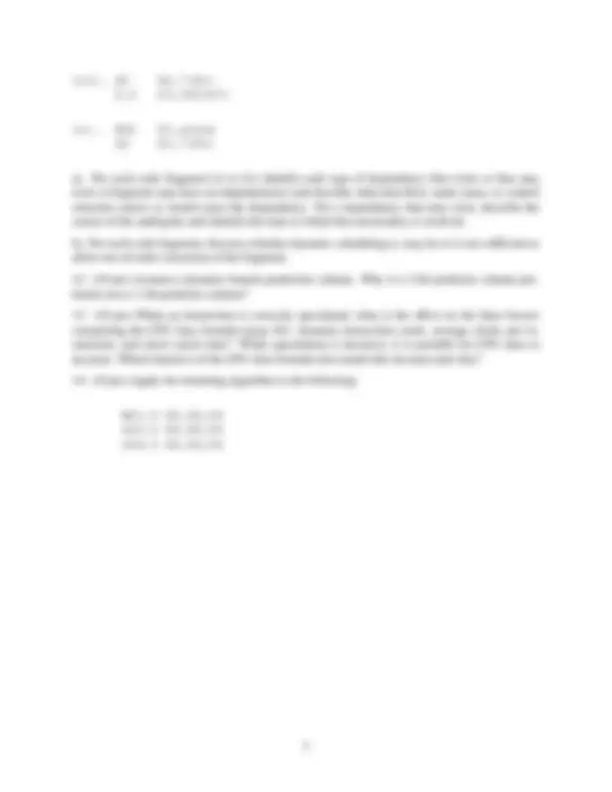



Study with the several resources on Docsity

Earn points by helping other students or get them with a premium plan


Prepare for your exams
Study with the several resources on Docsity

Earn points to download
Earn points by helping other students or get them with a premium plan
Community
Ask the community for help and clear up your study doubts
Discover the best universities in your country according to Docsity users
Free resources
Download our free guides on studying techniques, anxiety management strategies, and thesis advice from Docsity tutors
Material Type: Exam; Class: Computer Architecture; Subject: Computer Science; University: Bucknell University; Term: Fall 2007;
Typology: Exams
1 / 3

This page cannot be seen from the preview
Don't miss anything!


Prctice Problems for Final Exam Computer Architecture CSCI 320 – Fall 2007 December 3, 2007
Practice Problems for Final Exam Included are some questions from old CS320 quizes and final exams. I promise at least one of these will be on the exam.
a). On average, how utilized is the disk? b). What is the average time spent in the queue? c). What is the average response time for a disk request including the queuing time and disk service time? d). What is the average length of the waiting line? e). What is the average number of tasks in service?
a). On average, what is the utilization of the disk?
b). What is the length of the queue? (Hint: Use John Little’s Law.)
Address Instruction Comments
0 Load R1, 7 Load the contents of address 7 into R 1 Add R1, 8 Add the contents of address 8 to R 2 Store R1, 9 Store the contents of R1 into address 9 3 Load R2, 18 Load the contents of address 18 into R 4 Add R2, 19 Add the contents of address 19 to R 5 Store R2, 20 Store the contents of R2 into address 20 6 Halt
a). Show a diagram of an address request from the CPU. Label block address, tag, index and block offset fields. Show the size in bits for each.
b). Show a diagram of a cache line. Label the fields and show size in bits for each field.
c). Draw a diagram of the layout in memory showing the placement of the 7 instructions in blocks. Label the appropriate block addresses in the memory.
d). Determine the following from executing the above instructions. Assume the cache is empty at start and the PC starts at zero.
cache read hits —-
cache read misses —-
cache write hits —-
cache write misses —-
loop: L.D F0,0(R1) ADD.D F4,F0,F SUB.D F4,F2,F S.D F4,0(R1) DADDUI R1,R1,#- BNE R1,R2,loop
i). DADDI R1,R1,# LD R2,7(R1)
ii). DADD R3,R1,R SD R2,7(R1)